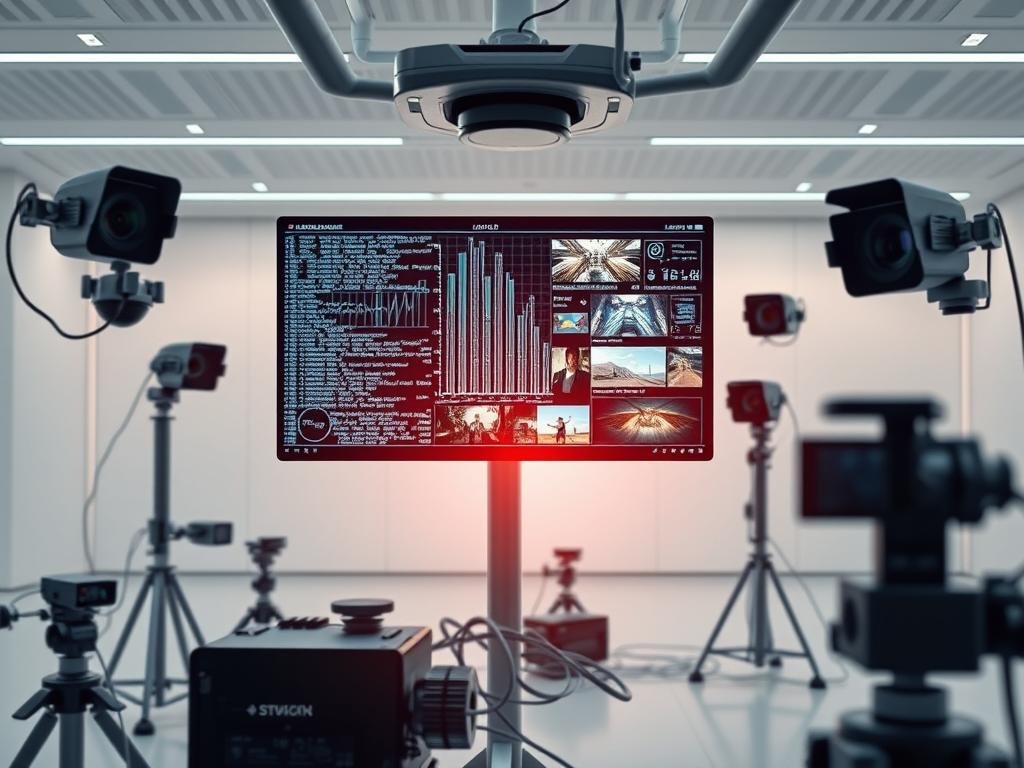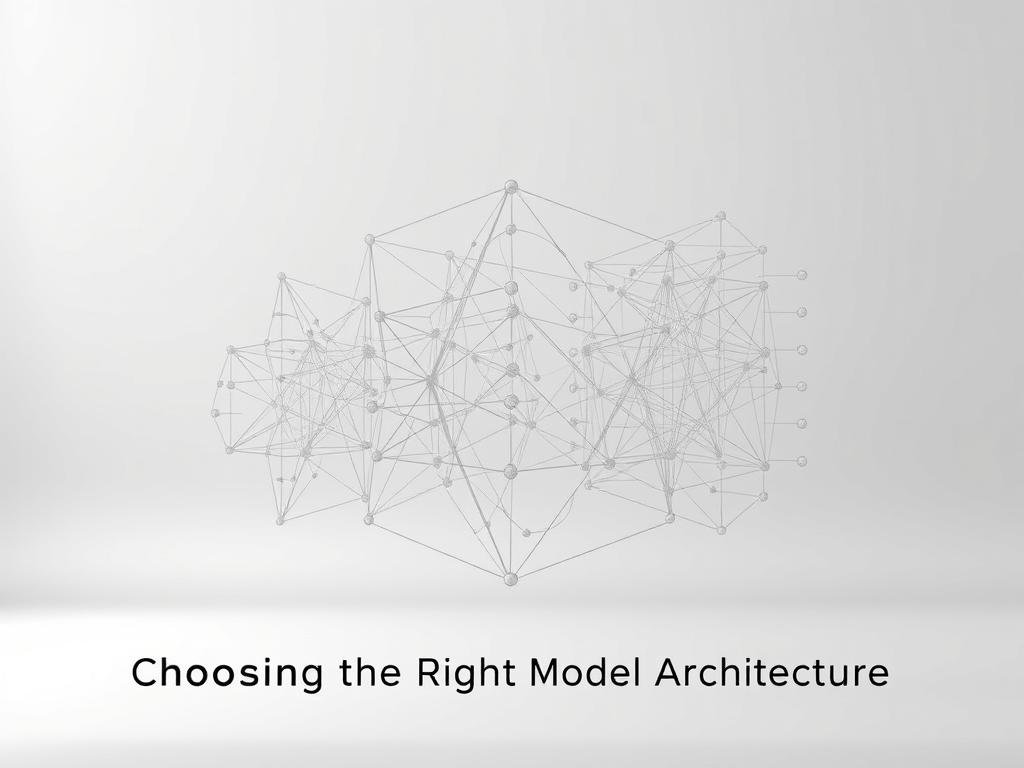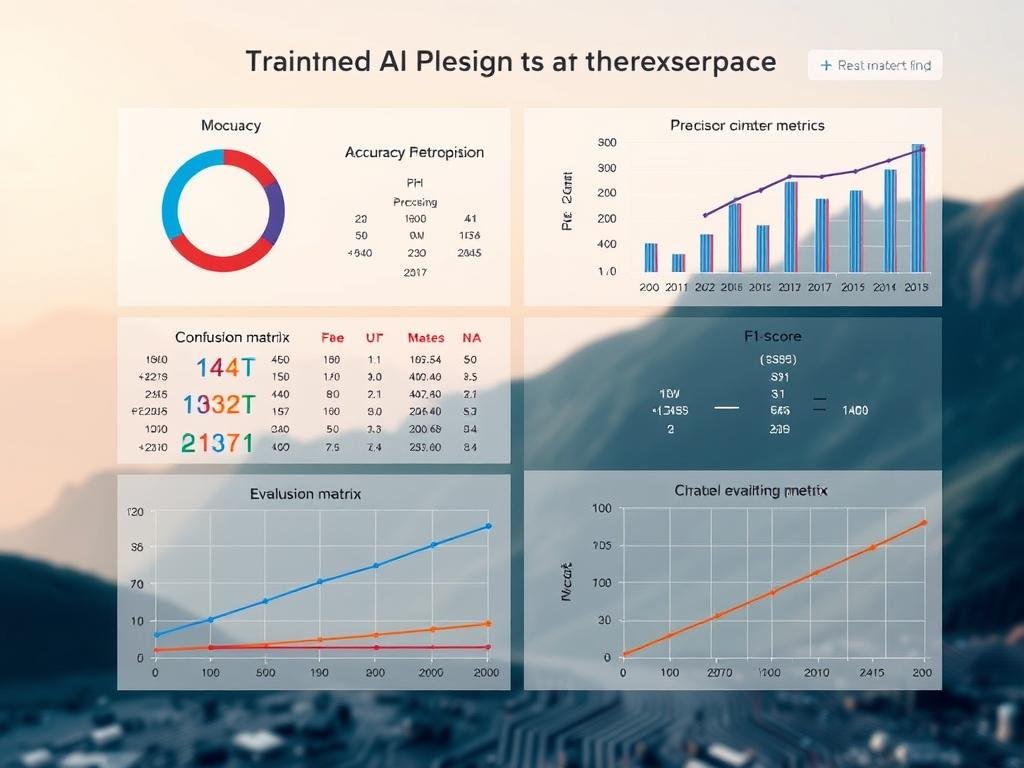Image recognition is a big deal in deep learning. But did you know the CIFAR-10 dataset has 60,000 tiny images? Each is just 32×32 pixels and falls into one of 10 categories. This dataset is key for training AI Models for Image Recognition in DIY projects.
Training image recognition models might seem hard. But with the right help, you can add this tech to your DIY projects. The CIFAR-10 dataset is a great place to start. It helps you see how deep learning algorithms solve real-world problems.
Using image recognition can make your DIY projects smarter. They’ll be more fun and advanced. This guide will show you how to train models for image recognition. It will help you make your ideas come to life.
Key Takeaways
- Understand the basics of image recognition and its applications in DIY projects.
- Learn how to utilize the CIFAR-10 dataset for training AI models.
- Discover the tools and resources required for AI development.
- Get started with integrating image recognition into your DIY endeavors.
- Explore the deep learning in making your projects better.
Understanding AI Models for Image Recognition
To understand image recognition, you need to know about AI models. These models are the base of image recognition systems. They help machines see and understand images.
What are AI Models?
AI models, like those for image recognition, use machine learning algorithms. Artificial intelligence trains these models on lots of data. This way, they can predict or classify things.
In image recognition, models learn from huge image collections. They identify objects, scenes, or activities.
Deep learning models are key in image recognition. They use neural networks to analyze images. This analysis goes from simple edges to complex objects.
Key Terminologies Explained
Knowing AI model terms is important for image recognition. Here are some key terms:
- Supervised Learning: A type of machine learning where the model is trained on labeled data, meaning the data is already tagged with the correct output.
- Neural Networks: Computational models inspired by the human brain’s structure, used for tasks like image recognition.
- Convolutional Neural Networks (CNNs): A specific type of neural network, great for image and video processing.
| Term | Description |
|---|---|
| Supervised Learning | Training a model on labeled data to make predictions. |
| Neural Networks | Computational models inspired by the human brain. |
| CNNs | Neural networks designed for image and video processing. |
Understanding these concepts helps you see how AI models work in image recognition. It prepares you for more advanced topics in the field.
The Importance of Image Recognition
Visual recognition software is changing many parts of our lives, like security and healthcare. It’s making our daily experiences and projects better.
Applications in Daily Life
Image recognition affects your daily life in many ways. For example, facial recognition technology helps unlock your phone or check identities. Also, Optical Character Recognition (OCR) makes it easy to turn printed text into digital form.
In medical imaging, it helps spot health problems like tumors or fractures fast and accurately. It’s also used in cars for autonomous driving, making roads safer.

Benefits of DIY Image Recognition Projects
Doing DIY image recognition projects lets you explore computer vision technology. You can learn how it works and use it to solve problems or create new things.
| Benefit | Description |
|---|---|
| Customization | Tailor your projects to specific needs or interests. |
| Learning Experience | Gain hands-on experience with image recognition technology. |
| Innovation | Create unique solutions or products using visual recognition software. |
By working on DIY image recognition projects, you learn about the tech and help it grow. You can use tools like TensorFlow or PyTorch to make your projects.
Tools and Frameworks for AI Development
To train AI models, you need to know the tools and frameworks available. Building artificial intelligence solutions for image recognition requires the right tech for the best results.
Popular AI Frameworks
Many frameworks are popular for creating and training AI models. TensorFlow and PyTorch are two of the most used.
- TensorFlow: An open-source library by Google, TensorFlow excels in deep learning. It’s great for image and speech recognition. It makes managing data easier, helping with large-scale machine learning.
- PyTorch: Known for its simplicity and flexibility, PyTorch is another favorite. It has a dynamic computation graph. This is perfect for quick prototyping and research.
| Framework | Primary Use | Notable Features |
|---|---|---|
| TensorFlow | Deep learning, image recognition | Scalability, extensive community support |
| PyTorch | Rapid prototyping, research | Dynamic computation graph, ease of use |
Hardware Requirements for Training
Training AI models, like those with complex neural network architectures, need lots of computing power. The right hardware is key for efficient and fast training.
A strong GPU is essential for deep learning model training. High-performance GPUs from NVIDIA are top choices. They handle big datasets quickly.
Knowing what hardware you need and choosing the right tools and frameworks is vital in AI development. The right tech boosts your AI models’ performance and abilities.
Data Collection and Preparation
Getting the right data is key for accurate image classification. You need a strong dataset to train your AI model well.
Sourcing Image Datasets
First, find high-quality image datasets. Look at ImageNet, CIFAR-10, and Open Images Dataset. You can also make your own dataset with images for your project.
When picking datasets, think about the variety and relevance of the images. Make sure the dataset includes different scenarios and edge cases. This makes your model stronger.

Cleaning and Augmenting Your Data
Data preparation is vital. It involves cleaning and augmenting your dataset. Cleaning removes errors and inconsistencies. Augmentation increases the dataset’s size and variety.
Common augmentation methods include rotation, flipping, scaling, and color changes. These methods help your model handle real-world variations better.
“Data augmentation is a powerful technique for improving the performance of image classification models. By generating new training examples from existing ones, you can significantly enhance your model’s ability to generalize.”
To show data preparation’s impact, look at this table:
| Technique | Accuracy | Precision |
|---|---|---|
| No Augmentation | 85% | 80% |
| With Augmentation | 92% | 90% |
By focusing on good data collection and preparation, you can greatly improve your image recognition model. Effective data preparation is essential for high accuracy and reliability in AI projects.
Choosing the Right Model Architecture
Choosing the right model architecture is key to AI image recognition success. It depends on the type of learning and the image complexity.
Supervised vs. Unsupervised Learning
It’s important to know the difference between supervised and unsupervised learning. Supervised learning uses labeled data for training. It’s great for image recognition with known categories.
Unsupervised learning finds patterns without labels. It’s useful for discovering new categories or anomalies. For more on the differences, check out Deep Learning vs. Machine Learning.
| Learning Type | Description | Use Case |
|---|---|---|
| Supervised | Model trained on labeled data | Image classification with known categories |
| Unsupervised | Model identifies patterns without labels | Discovering new categories or anomalies |
Common Architectures (CNN, RNN)
Convolutional Neural Networks (CNNs) and Recurrent Neural Networks (RNNs) are common in image recognition. CNNs are great for extracting spatial features from images. Experts say CNNs are excellent at recognizing complex patterns.
“The key to CNNs’ success lies in their ability to capture local patterns and hierarchies in image data, making them ideal for tasks like object detection and image classification.”
RNNs are often used for sequential data but can also work for image recognition, like in sequences.

Knowing the strengths and weaknesses of different architectures helps you choose the best for your project.
Training Your Model
Once you have your dataset ready, it’s time to train your model. You’ll use a deep learning framework for this. This process has several key steps to help you build a good image recognition system.
Setting Up the Environment
To begin, you need to set up your development environment. You’ll need to install deep learning frameworks like TensorFlow or PyTorch. These frameworks offer tools and libraries to make training easier. For example, TensorFlow has the tf.keras API for building and training models.
There are many resources online to help with installation. Check the official TensorFlow or PyTorch websites for instructions. You might also want to look at Digital Vista Online to compare different AI image generators.
Defining Hyperparameters
Choosing the right hyperparameters is key for model training. Hyperparameters are set before training, like the learning rate and batch size. The right choices can greatly affect your model’s performance.
| Hyperparameter | Description | Common Values |
|---|---|---|
| Learning Rate | Controls how quickly the model learns from the data | 0.001, 0.01, 0.1 |
| Batch Size | The number of training examples used in one iteration | 32, 64, 128 |
| Number of Epochs | The number of times the model sees the entire training dataset | 10, 20, 50 |
After setting your hyperparameters, start the training. Watch how your model does on the validation dataset. Adjust your hyperparameters as needed. This back-and-forth helps you get the best results for your image recognition task.
Evaluating Model Performance
Checking how well your AI model works is key. It must be good at recognizing images. You need to look at different performance metrics and test it with special datasets.
Metrics to Consider
There are important metrics to check. Accuracy shows how many images your model gets right. But, it’s not enough if your dataset is not balanced.
Precision is also vital. It tells you how often your model is right when it says something is positive. This shows your model is trustworthy when it says yes.

Testing with Validation Datasets
It’s important to test your model with special datasets. These datasets are not used for training. They help you see how your model really does in real life. For more info, check out evaluating the performance of an image classification.
Using these datasets helps you find problems like overfitting or underfitting. Then, you can fix your model to make it better.
Fine-tuning Your Model
After setting up your AI model for image recognition, it’s time to fine-tune it. This step adjusts the model’s parameters to fit your specific dataset and task. It can greatly improve its accuracy and efficiency.
Techniques for Improvement
There are several ways to fine-tune your model. One method is to adjust the learning rate. This controls how fast the model learns from data. A lower learning rate can lead to more precise training but may take longer.
- Try different optimizers to see which one works best for your model.
- Use data augmentation to make your training dataset bigger. This can make your model more robust.
- Always check your model’s performance on a validation set to spot any problems early.
For more detailed guidance on fine-tuning, check out this article on fine-tuning an image segmentation model. It offers tips on improving model performance.
Transfer Learning Explained
Transfer learning is a powerful technique. It lets your model use pre-trained knowledge, cutting down training time and improving performance. By starting with a pre-trained model, you can adapt it to your task with less data and resources.
To use transfer learning, follow these steps:
- Pick a pre-trained model that fits your task.
- Keep some of the model’s layers frozen to keep the pre-trained knowledge.
- Adjust the remaining layers on your dataset.
By combining these methods, you can greatly improve your model’s performance. This will help you get better results in image recognition tasks.
Implementing the Model
Putting your AI model to work means picking the best way to use it. This choice is key to making your image recognition system work well in real life. It affects how easy and useful your system will be.
Deployment Options
You have a few ways to deploy your model, like on the web or mobile. Each option has its own benefits and fits different needs.
- Web Deployment: Great for apps that users access through a browser. It makes updates and upkeep simple.
- Mobile Deployment: Best for apps that need to be used on the move. It means linking your model with mobile app tools.
For more help on setting up and using your model, check out Microsoft’s guide on model customization.
Integrating with Other Systems
Linking your model with other systems is essential for a smooth workflow. This might mean connecting it with databases, other AI tools, or APIs.
| Integration Type | Description | Benefits |
|---|---|---|
| Database Integration | Connecting your model to a database to fetch or store data. | Improves data handling and cuts down on manual entry. |
| API Integration | Integrating your model with external APIs for extra features. | Boosts your model’s abilities and makes it work better with others. |
By planning your deployment and integration carefully, you can make sure your AI model works well. It should be efficient and able to grow with your needs.
Troubleshooting Common Issues
Troubleshooting is key in making AI models for image recognition work well. It helps you deal with problems like overfitting and hardware limits. Knowing how to spot and fix these issues is vital for top-notch performance and accuracy.
Overfitting and Underfitting
Overfitting and underfitting are big challenges you’ll face. Overfitting means your model is too detailed and picks up on noise instead of the main pattern. Underfitting is when your model is too simple and misses the pattern in the data.
To tackle these problems, you can try a few things:
- Regularization techniques, like L1 and L2, can reduce overfitting by making large weights costlier.
- Early stopping stops training when the model’s performance on the validation set drops.
- Data augmentation boosts the training dataset size, making overfitting harder.
- Increasing the model’s complexity can solve underfitting, but don’t overdo it.
“The key to successful model training is not just about having a lot of data, but also about understanding how to effectively utilize that data to avoid common pitfalls like overfitting and underfitting.”
Hardware Limitations and Solutions
Hardware can be a big hurdle, mainly with big datasets and complex models. Issues include not enough GPU memory, slow speeds, and data transfer problems.
Here are some ways to get around these issues:
| Hardware Issue | Potential Solution |
|---|---|
| Insufficient GPU Memory | Use gradient checkpointing, model parallelism, or upgrade to a GPU with more memory. |
| Slow Processing Speeds | Optimize your code, use mixed precision training, or distribute the training across multiple GPUs. |
| Data Transfer Bottlenecks | Use faster storage solutions like NVMe SSDs, or optimize data loading and preprocessing to reduce the load on the system. |
By tackling these common problems, you can greatly enhance your AI models’ performance and efficiency for image recognition.
Future Trends in Image Recognition
Exploring AI models for image recognition in DIY projects is exciting. It’s important to think about the future trends in this technology. Advances in deep learning and AI ethics will shape the future of image recognition.
Advancements in Deep Learning Techniques
Deep learning is leading to new breakthroughs in image recognition. You can look forward to better accuracy and efficiency. This will open up more complex uses for image recognition.
Techniques like transfer learning and neural architecture search are becoming more common. They make it easier to create advanced models.
The Growing Importance of AI Ethics
As image recognition technology spreads, AI ethics becomes more critical. You need to think about bias, privacy, and transparency when creating models. It’s important to make sure your models are fair, secure, and follow the rules.
By keeping up with trends and focusing on AI ethics, you can create innovative and responsible image recognition solutions.
FAQ
What is the role of deep learning in AI image recognition?
Deep learning is key in AI image recognition. It helps machines understand images. They use neural networks to spot patterns and make predictions.
How do I choose the right AI framework for my image recognition project?
Pick an AI framework based on your project’s needs. TensorFlow and PyTorch are good choices. They have strong algorithms for image recognition.
What are the key considerations for sourcing image datasets?
Look for high-quality, diverse, and relevant images. Make sure the dataset is well-annotated. It should be enough for training your AI models.
How can I improve the performance of my image recognition model?
Boost your model’s performance with data augmentation and hyperparameter tuning. Also, use pre-trained models for transfer learning. These steps can make your model more accurate.
What are the common challenges in training AI models for image recognition?
You might face overfitting, underfitting, and hardware issues. To overcome these, evaluate your model, prepare your data well, and consider cloud computing.
How do I deploy my trained image recognition model?
You can deploy your model in web apps, mobile apps, or other systems. Make sure your deployment fits your project’s needs and can grow.
What is the significance of AI ethics in image recognition development?
AI ethics is critical for responsible image recognition tech. It deals with bias, privacy, and transparency in AI systems.
Can I use pre-trained models for my image recognition tasks?
Yes, you can use pre-trained models for specific tasks through transfer learning. This method saves time and boosts performance.
What are the future trends in image recognition technology?
Future trends include better deep learning, more focus on AI ethics, and advanced computer vision. These will improve image recognition’s capabilities and uses.
